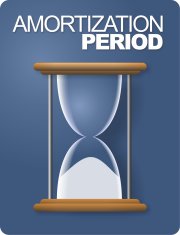35-Year Amortization in Debate
Rumors that the Government of Canada’s Finance Department is musing the possibility of dropping the maximum amortization from 35 years to 25 years are sparking discussion among financial experts and potential mortgagers.
The year before last the government decided to cut back amortizations on high ratio loans (loans that require financing of 80 per cent or more of the mortgaged property’s value) from 40 years to 35 years. Lessening the overall time homebuyers have to pay their mortgage loan back would decrease the amount of Canadians who could potentially qualify for mortgage financing. But is it in their best interest?
There are two ways to look at this answer. On one side, financial experts tend to think that though the longer the amortization, the more that could be paid in interest rates over time, the choice should be available and left up to the Canadian homebuyer. According to Canadian insurance providers, the average Canadian will pay their mortgage in less time than that provided by their amortization through the option of pre-payments. Thus they determine Canadians are capable of formulating viable financial plans for themselves.
On the flip side, other experts say that Canadians have forgotten how to save and have become too reliant on credit to fulfill their ownership aims. Looking again to the United States for example, where country-wide devaluation of property values has had strikingly large negative effect on debt to income ratios among households, do Canadians really want to be committed to a 35-year debt to which payments could potentially greatly exceed the actual value of the home that they are financing?
According to Ed Clark, CEO for the Toronto Dominion (TD) Bank, cutting the maximum allowable amortization down to 25 years now would be a wise preventative measure for the future market.
“We see a world in which low interest rates and excess liquidity has created asset bubbles all over the world,” Clark said this month, adding that Canadians’ current habit of lowering monthly payments by spreading them over a longer duration, verses saving up a bulk and paying more faster, is not a good path.
“We don’t have a problem [in Canada], but why are we not making sure we don’t create a problem?” he asked.
The majority of Canadians would probably agree that they would rather the choice of how their finances are applied and governed be left to them. In contemplating your home ownership strategy, weigh out the pros and cons of a longer amortization before you commit. If a longer amortization would give you breathing room to cover other monthly expenditures, and chances are high that you will be able to pay that mortgage down in less time regardless, it may be the best choice for you to take. Maximum amortizations are usually attributed a higher interest rate on high ratio loans, but by less than 0.5 per cent. Always ensure your budget still has funds free to attribute to savings for retirement or other investment options.
If your budget is extremely tight and the only way you think you might afford home ownership is with the maximum amortization and the lowest monthly payments possible, you will probably need to reassess your strategy. Perhaps you are looking at property that is not within your means, or you simply need to save a bit longer and amass a larger down payment.
Whatever your decision, or the Government of Canada’s, always ensure that your financial budget leaves flex funds to put away for retirement, emergency and leisure. Attain home financing that is truly within your real means, and beneficial to your needs.


